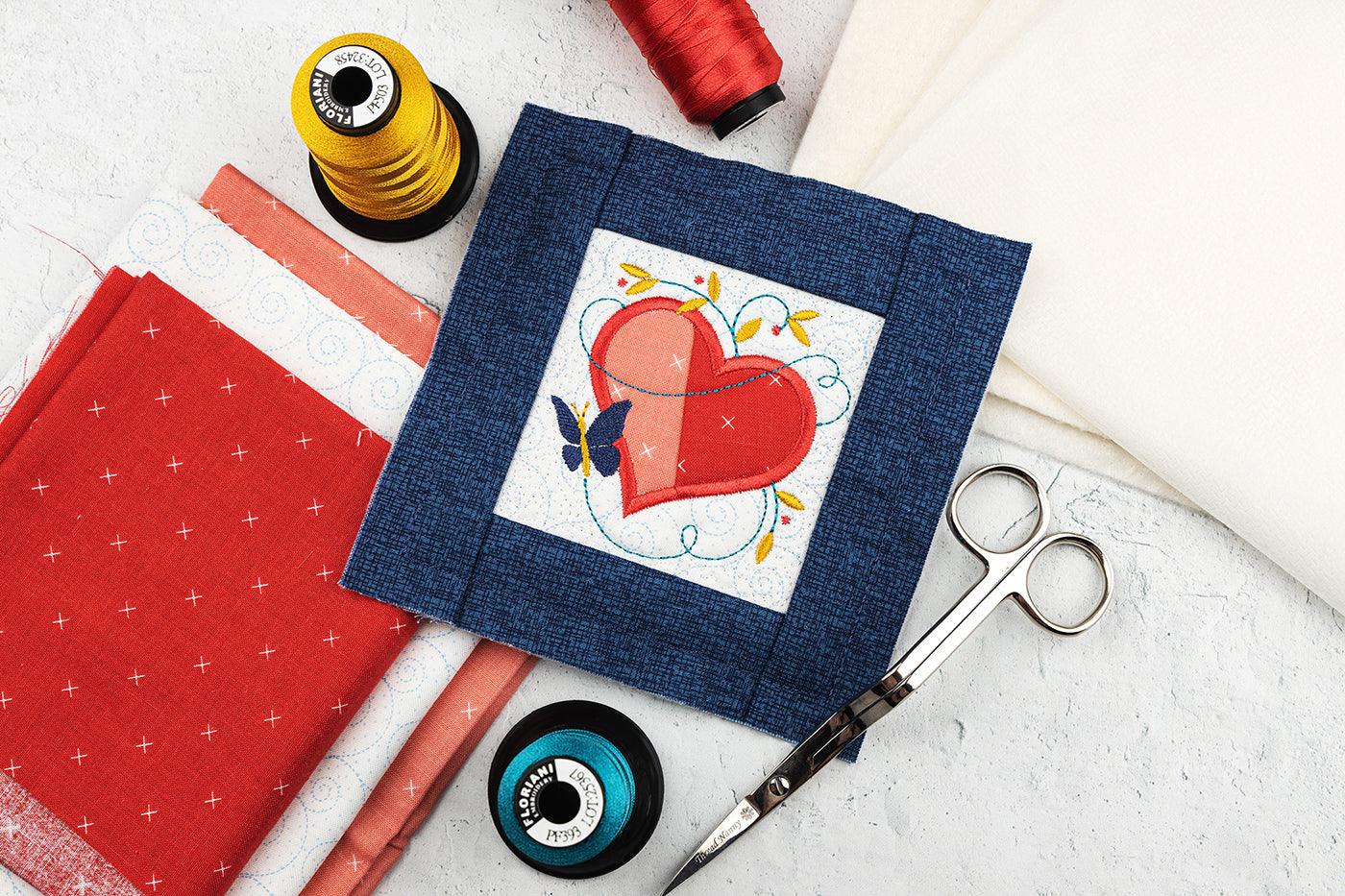
folded fabric Paper piecing

Folded fabric is a technique we love using to create stunning visual effects. Clean, crisp edges and a seamless finish are easily accomplished with minimal effort! This technique can be used in more than one way: within appliqués like traditional paper piecing, as borders in quilting collections, and even as the main element for blocks. Folded fabric will always be digitized to include 3 key steps:
1. Placement Stitch - This will show you the entire area of where the shape will be and the size.
2. Folding Stitch - After placing your fabric face down about 1/4” inside of the placement stitch, the next step will be the folding stitch, which creates the crease for your fold.
3. Tack Down Stitch - Once the folding stitch is complete, flip the fabric over the folding stitch and pull taut to create the crease. The tack down stitch will follow, completing your folded fabric look.
The best part? If you're not sure how much fabric to use, just measure based off of the placement stitch so you wont be wasting any materials!
Folded fabric borders

You'll see us use folded fabric borders often in our quilt collections because of the simple and distinct boundaries they provide for the final project. The steps for these borders in-the-hoop are very similar to the paper piecing style: Placement stitch, folding stitch, tacking stitch. You'll repeat those steps three more times for the other edges and then trim the block's excess outer fabric down to a 1/2" seam allowance to make sewing together much easier!
Watch this clip below to see how to create a folded fabric border step-by-step!
Folded fabric Cornerstones

The folded fabric technique for quilt blocks is also great for recreating a more traditional looking quilt. Rather than having embroidery or other appliqué details, this style focuses on simple block designs and clean folds to create bold patterns. Many quilt designs can be created with even the simplest of block styles! When working on these types of projects, there will be what we call a "cornerstone", which we've marked with a star icon above. The cornerstone is treated like standard appliqué with its placement, tack down, and trimming. The remaining sections use the folded fabric steps that are built upon the cornerstone. The fabric's order will be numbered, like in the example above.
Looking for a folded fabric project?
Check out some of these folded fabric technique collections!





